Britain’s Vision
Our sight is one of our most important senses, and losing it has a disruptive impact on the lives of millions.
From less moderate cases that can be simply corrected with glasses, to full blindness, sight loss affects many people in different ways all around the country, but does where you live make a difference? We’ve delved into the latest NHS data to find out.
The UK’s Worst Areas for Sight Loss
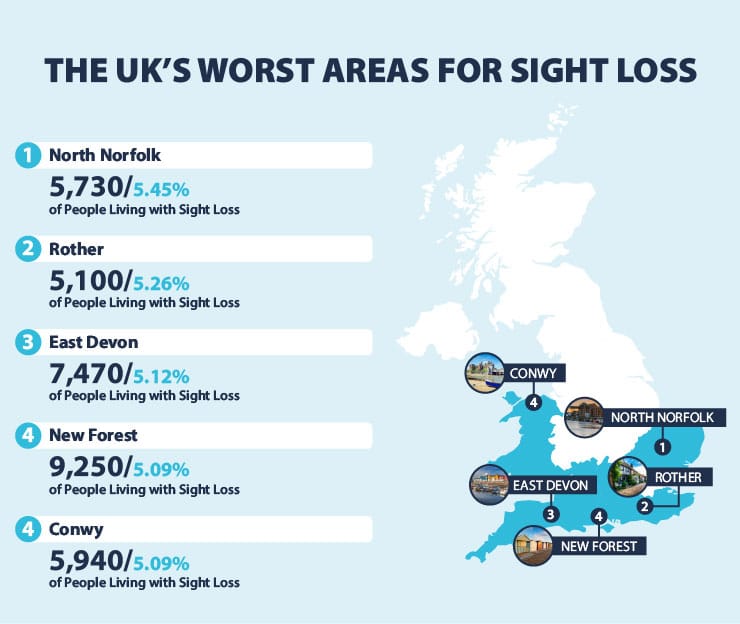
The area with the highest proportion of people suffering from sight loss is North Norfolk, where 5.45% experience some kind of vision problems.
Most of the places with high levels of sight issues are more rural and coastal areas that have older populations, while those at the other end of the scale, with fewer people suffering from sight loss, are mainly found in big cities and areas with younger populations.
In fact, nine of the ten areas with the fewest sight problems are in London (with Manchester being the other).
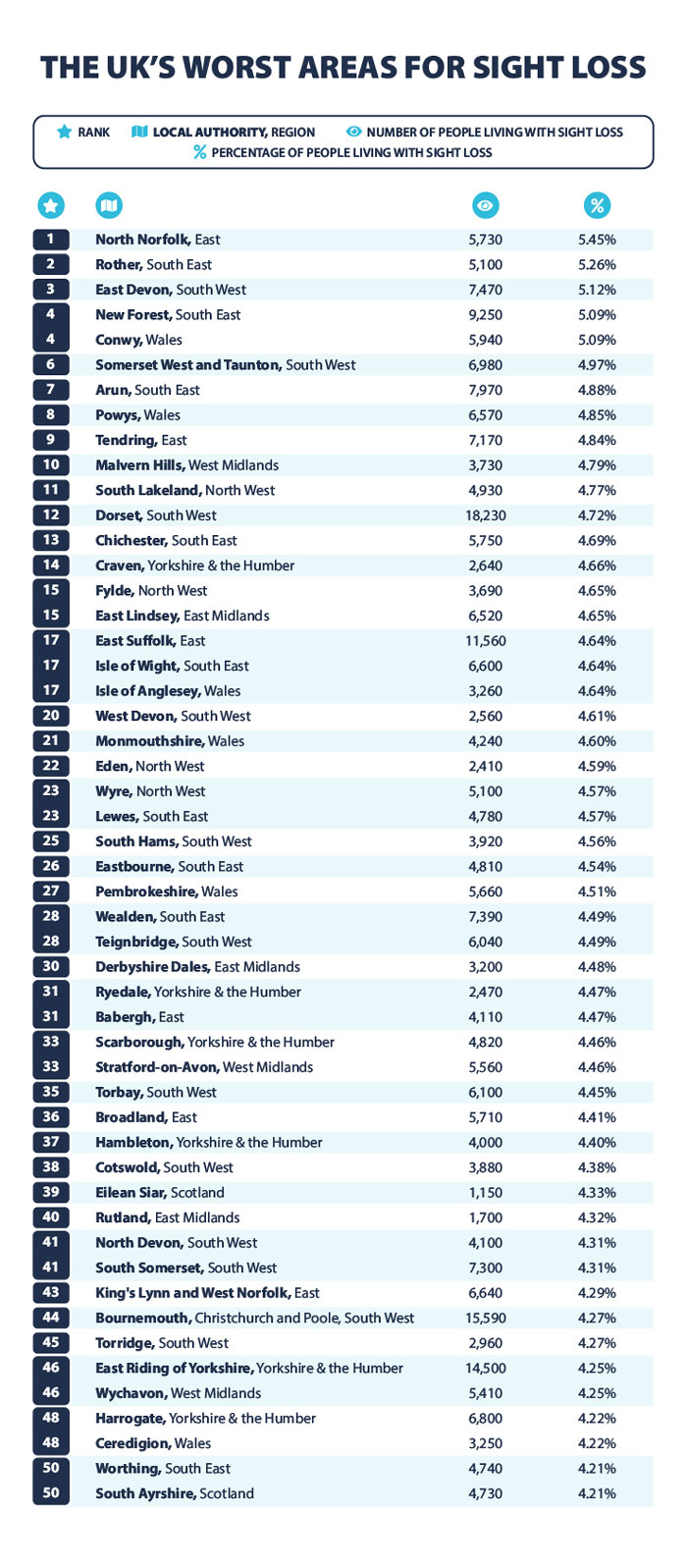
Areas with the Most Eye Test Bookings
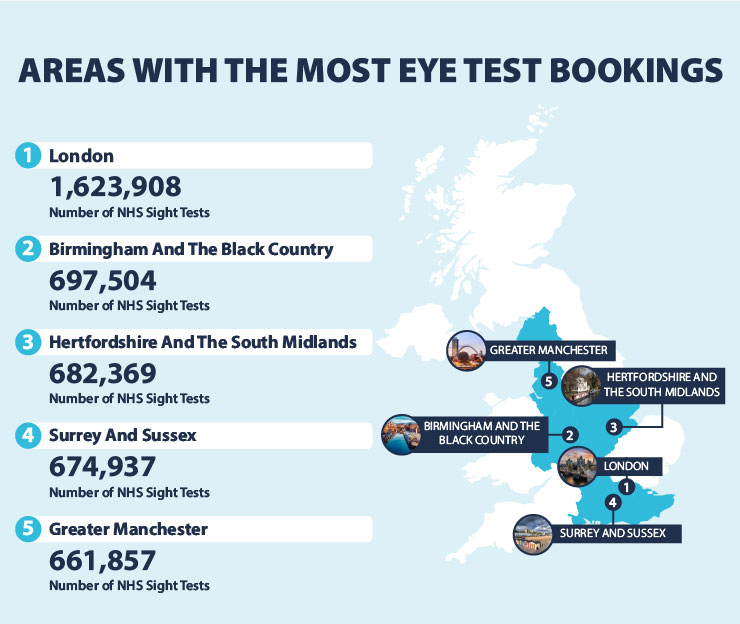
Looking at which NHS Trust areas carried out the most sight tests, it’s perhaps no surprise to see that London had more than any other area, with over 1.6 million people booking eye tests in the capital.
This was followed by two Midlands trusts, Birmingham and the Black Country (697,504) and Hertfordshire and the South Midlands (682,369).
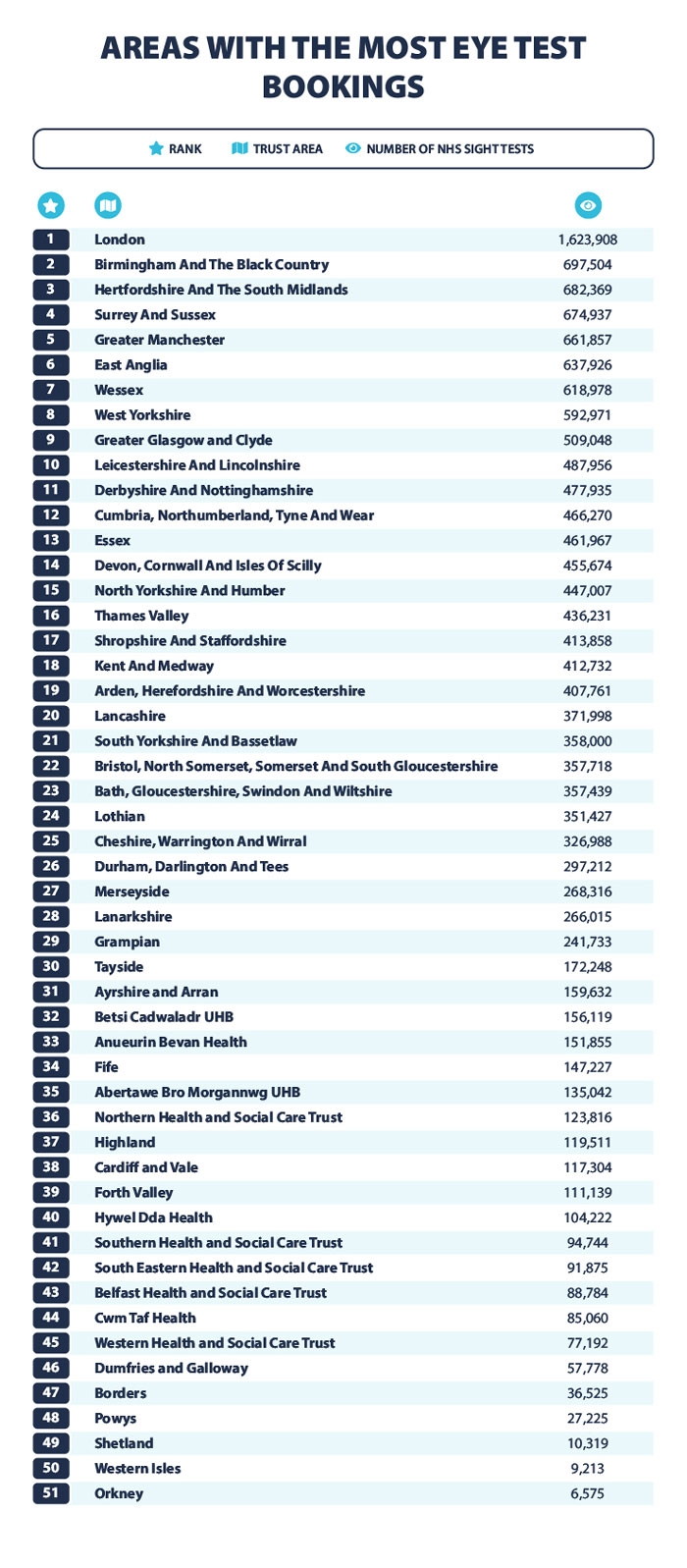
Areas with the Most Eye-Related Hospital Admissions
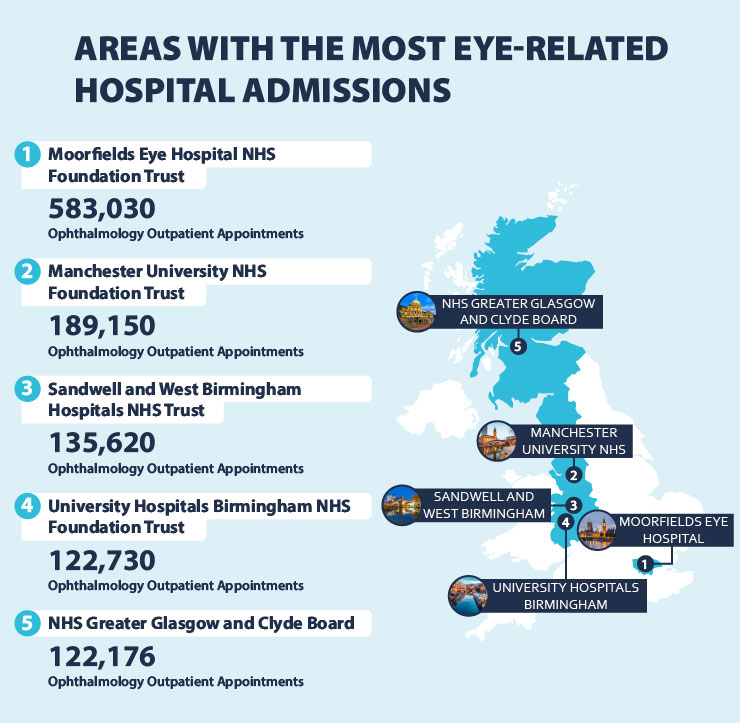
As the oldest and largest centre for eye treatment in Europe, Moorfields Eye Hospital in London receives over three times as many outpatients a year for eye-related issues, with 583,030.
This was followed by those in the Manchester University NHS trust with 189,150, as well as two West Midlands trusts, Sandwell and West Birmingham (135,620), and University Hospitals Birmingham (122,730).
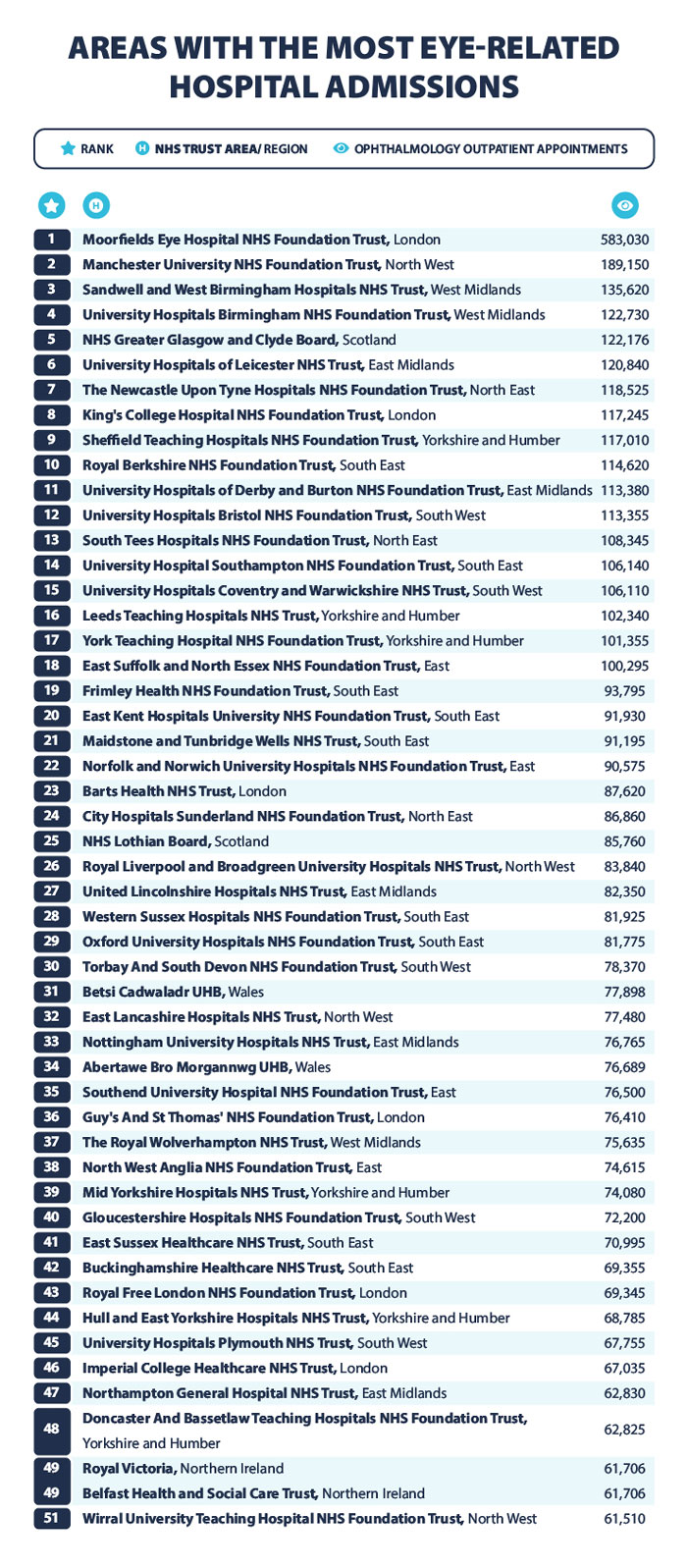
Areas with the Biggest Expenditure on Vision Problems
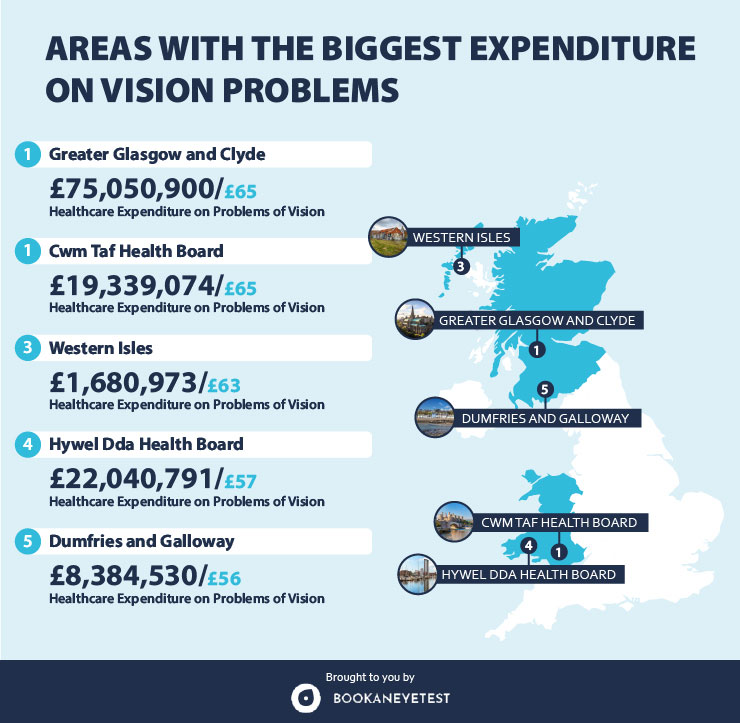
With so many people suffering from sight loss in the UK, billions of pounds are spent each year on the prevention and treatment of various eye diseases, but which areas spend the most?
Greater Glasgow and Clyde had the highest expenditure both overall (£75m) and on a per-person basis (£65), which was also matched by hospitals in the Cwm Taf Health Board area in Wales.
In fact, nine out of the top ten areas that spent the most per person on problems of vision were found in either Scotland or Wales, while each of the bottom ten were located in England, with Lincolnshire East having the lowest spend per person at just £14, more than four times less than in Glasgow.
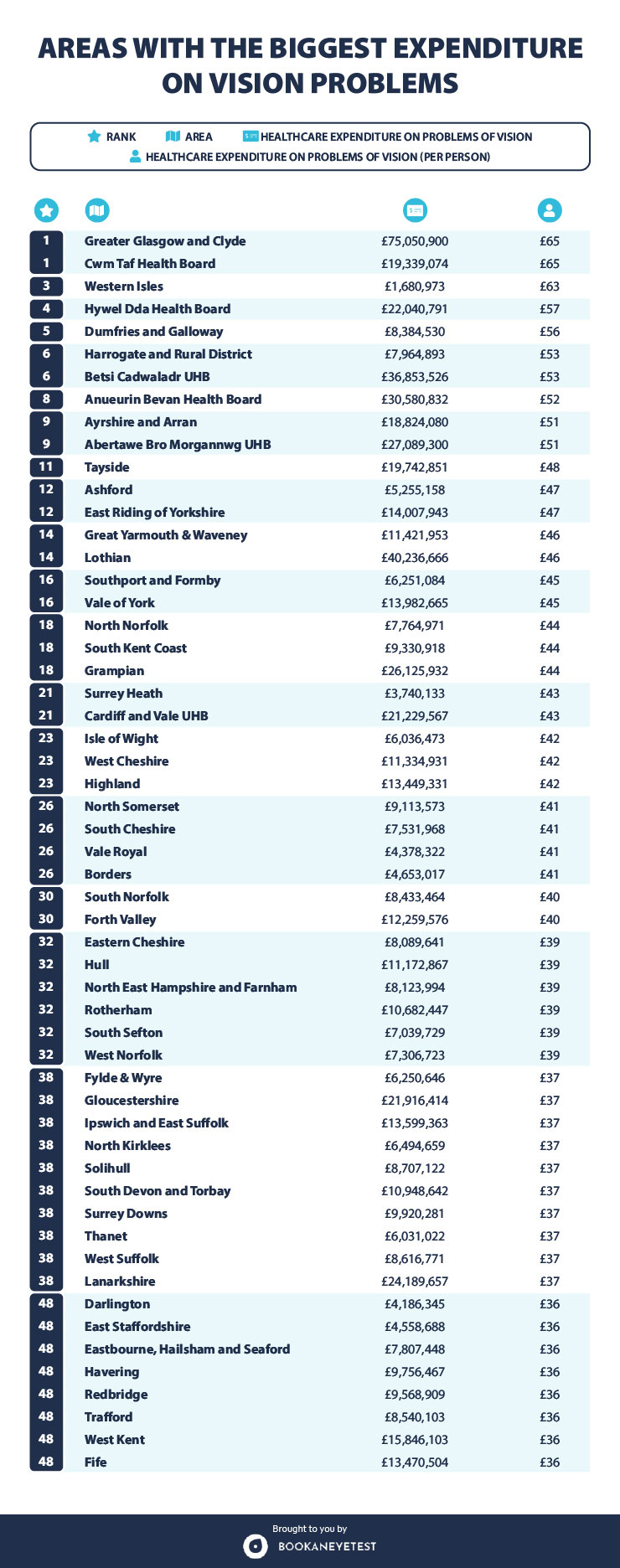
Methodology
All data sourced from the RNIB’s Sight Loss Data Tool.
Data on the number of people with sight loss refers to local authorities and shows the estimated number of people living with either mild, moderate, or severe sight loss in 2020.
Sight test data refers to NHS Area Teams and shows the number of NHS sight tests recorded in 2018/19 (2016/17 in England).
Hospital data refers to NHS Hospital Trusts (hospitals in Northern Ireland) and shows the number of ophthalmology outpatient appointments in 2018/19.
Expenditure data refers to Clinical Commissioning Groups in England, Health Boards in Wales and Scotland, and Health and Social Care Trusts in Northern Ireland and shows the total and per person annual healthcare expenditure on problems of vision in 2016/17 (2013/14 in England).
Related articles




